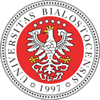Proszę używać tego identyfikatora do cytowań lub wstaw link do tej pozycji:
http://hdl.handle.net/11320/11712Pełny rekord metadanych
| Pole DC | Wartość | Język |
|---|---|---|
| dc.contributor.author | Wiśniewski, Adam | - |
| dc.date.accessioned | 2021-10-12T08:15:05Z | - |
| dc.date.available | 2021-10-12T08:15:05Z | - |
| dc.date.issued | 2021 | - |
| dc.identifier.citation | Białostockie Studia Prawnicze, Vol. 26 nr 3, 2021, s. 109-133 | pl |
| dc.identifier.issn | 1689-7404 | - |
| dc.identifier.uri | http://hdl.handle.net/11320/11712 | - |
| dc.description.abstract | The Internet-related cases coming to the European Court of Human Rights provide a good illustration of the challenges posed to the protection of human rights as based on the European Convention of Human Rights drafted in 1950. Considering that the Convention is a 70-year-old instrument, the Strasbourg Court has to deal with these cases using the body of principles and interpretation methods and techniques that has been developed so far, and in particular the ‘living instrument’ doctrine. In this study I propose to explore some main threads in the Court’s jurisprudence on Internet-related cases, outlining the specific nature of Internet-related cases, discussing the problem of rights connected with the Internet as well as the impact of the Internet on such classical rights as freedom of expression and the right to privacy. I conclude that the Internet-related case law of the Convention is in a process of constant development. The Strasbourg Court has demonstrated that it is capable of dealing with Internet-related cases based on general Convention norms and using its well-developed interpretation techniques. The striking feature of Strasbourg’s case law is the ECtHR’s recognition of the considerable importance of the Internet as regards the exercise of freedom of expression, and in particular freedom to seek and access information. Although the ECtHR regards the Internet as a communication medium, however, it recognises its specific features which affect the performance of rights protected by the Convention as well as dangers it poses for the protection of human rights under the European Convention of Human Rights. | pl |
| dc.language.iso | en | pl |
| dc.publisher | Wydział Prawa Uniwersytetu w Białymstoku, Temida 2 | pl |
| dc.rights | Uznanie autorstwa-Użycie niekomercyjne-Bez utworów zależnych 3.0 Unported | - |
| dc.rights.uri | https://creativecommons.org/licenses/by-nc-nd/3.0/deed.pl | - |
| dc.subject | human rights | pl |
| dc.subject | Internet | pl |
| dc.subject | the European Convention of Human Rights | pl |
| dc.subject | the European Court of Human Rights | pl |
| dc.title | The European Court of Human Rights and Internet-Related Cases | pl |
| dc.type | Article | pl |
| dc.rights.holder | Uznanie autorstwa-Użycie niekomercyjne-Bez utworów zależnych 3.0 Unported (CC BY-NC-ND 3.0) | pl |
| dc.identifier.doi | 10.15290/bsp.2021.26.03.06 | - |
| dc.description.Email | adam.wisniewski@prawo.ug.edu.pl | pl |
| dc.description.Biographicalnote | Adam Wiśniewski is Associate Professor and Head of the Department of Public International Law in the Faculty of Law and Administration, University of Gdańsk, Poland. | pl |
| dc.description.Affiliation | University of Gdańsk, Poland | pl |
| dc.description.references | Best M.L., Can the Internet Be a Human Right? (in:) S. Hick, E.F. Halpin and E. Hoskins (eds.), Human Rights and the Internet, New York 2000. | pl |
| dc.description.references | Decision of the ECtHR of 11 March 2014 as to the admissibility of the case of Akdeniz v. Turkey, application no. 20877/10. | pl |
| dc.description.references | Decision of the ECtHR of 18 October 2005 as to the admissibility of the case of Perrin v. the United Kingdom. | pl |
| dc.description.references | Directive 2000/31 / EC of the European Parliament and of the Council of 8 June 2000 on certain legal aspects of information society services, in particular electronic commerce, in the Internal Market. | pl |
| dc.description.references | Garlicki L. (ed.), Konwencja o Ochronie Praw Człowieka i Podstawowych Wolności. Tom I, Komentarz do artykułów 1–18, Warsaw 2010. | pl |
| dc.description.references | Flogartis S., Zwart T., Fraser J., The European Court of Human Rights and its Discontents. Turning Criticism into Strength, Cheltenham/Northampton 2013. | pl |
| dc.description.references | Gosztonyi G European Court of Human Rights: Internet Access as a Means of Receiving and Imparting Information and Ideas, “International Comparative Jurisprudence” 2020, vol. 6, no. 2, https://ojs.mruni.eu/ojs/international-comparative-jurisprudence/article/view/6292. | pl |
| dc.description.references | Human Rights Council: Report of the Special Rapporteur on the promotion and protection of the right to freedom of opinion and expression, Frank La Rue, 16 May 2011, A/HRC/17/27, https://documents-dds-ny.un.org/doc/RESOLUTION/GEN/G12/153/25/PDF/G1215325.pdf?OpenElement. | pl |
| dc.description.references | Human Rights Council: The promotion, protection and enjoyment of human rights on the Internet, 27 June 2016, https://www.article19.org/data/fi les/Internet_Statement_Adopted.pdf. | pl |
| dc.description.references | Internet: Case-law of the European Court of Human Rights, Council of Europe, 2011, updated June 2015, https://www.echr.coe.int/documents/research_report_internet_eng.pdf. | pl |
| dc.description.references | Kakavoulis K., The case Google Spain v. AEPD and Mario Costeja Gonzalez of the Court of Justice of the European Union: A Brief Critical Analysis, https://www.homodigitalis.gr/en/posts/2900. | pl |
| dc.description.references | Mik C., Charakter, struktura i zakres zobowiązań z Europejskiej Konwencji Praw Człowieka, „Państwo i Prawo” 1992, no. 4. | pl |
| dc.description.references | Murphy T. and O Cuinn G., Works in Progress: New Technologies and the European Court of Human Rights, “Human Rights Law Review” 2010, vol 10, no. 4. | pl |
| dc.description.references | Karska E. and Karski K., Introduction: Extraterritorial Scope of Human Rights, “International Community Law Review” 2015, vol. 17, no. 4–5. | pl |
| dc.description.references | Prebensen S.C., The Margin of Appreciation and Articles 9, 10 and 11 of the Convention, “Human Rights Law Journal” 1998, vol. 19, no. 1. | pl |
| dc.description.references | Report of the Special Rapporteur on the promotion and protection of the right to freedom of opinion and expression, Frank La Rue, GE.11–13201, 16 May 2011, https://www2.ohchr.org/english/bodies/hrcouncil/docs/ 17session/A.HRC.17.27_en.pdf. | pl |
| dc.description.references | Jasmontaite L. and Hert P. de, Access to the Internet in the EU: A Policy Priority, a Fundamental, a Human Right or a Concern for eGovernment? “Brussels Privacy Hub Working Paper” February 2020, vol. 6, no. 19, https://www.researchgate.net/publication/339860840_Access_to_the_Internet_in_the_EU_a_policy_priority_a_fundamental_a_human_right_or_a_concern_for_eGovernment. | pl |
| dc.description.references | Organization for Security and Co-operation in Europe, ‘Freedom of Expression on the Internet: A study of legal provisions and practices related to freedom of expression, the free flow of information and media pluralism on the Internet in OSCE participating States’, 15 December 2011, https://www.osce.org/files/f/documents/e/f/80723.pdf. | pl |
| dc.description.references | Rzucidło J., Prawo dostępu do internetu jako podstawowe prawo człowieka: Część I, „Kwartalnik Naukowy Prawo Mediów Elektronicznych” 2010, no. 2. | pl |
| dc.description.references | Szeghalmi V., Difficulties Regarding the Right to Be Forgotten in the Case Law of the Strasbourg Court, “Athens Journal of Law” 2018, vol. 4, no. 3. | pl |
| dc.description.references | Wiśniewski A., Koncepcja marginesu oceny w orzecznictwie Europejskiego Trybunału Praw Człowieka, Gdańsk 2008. | pl |
| dc.description.references | Zieliński M., Dostęp do Internetu jako prawo człowieka? W sprawie potrzeby nowej wolności w konstytucji Rzeczypospolitej Polskiej, „Przegląd Sejmowy” 2013, no. 4. | pl |
| dc.description.volume | 26 | pl |
| dc.description.number | 3 | pl |
| dc.description.firstpage | 109 | pl |
| dc.description.lastpage | 133 | pl |
| dc.identifier.citation2 | Białostockie Studia Prawnicze | pl |
| dc.identifier.orcid | 0000-0002-4921-0215 | - |
| Występuje w kolekcji(ach): | Białostockie Studia Prawnicze, 2021, Vol. 26 nr 3 | |
Pliki w tej pozycji:
| Plik | Opis | Rozmiar | Format | |
|---|---|---|---|---|
| BSP_26_3_A_Wisniewski_The_European_Court_of_Human_Rights_and_Internet_Related_Cases.pdf | 236,81 kB | Adobe PDF | Otwórz |
Pozycja ta dostępna jest na podstawie licencji Licencja Creative Commons CCL


